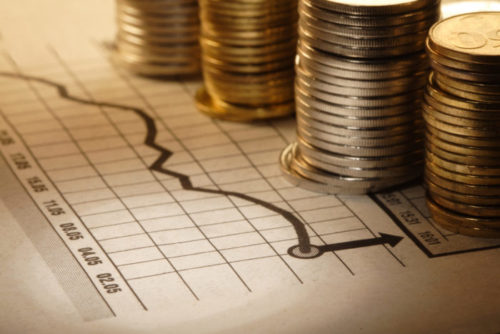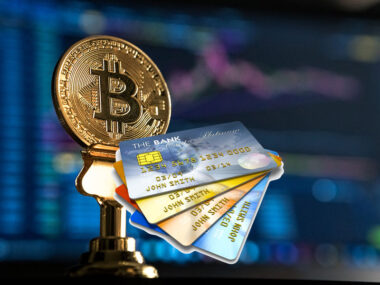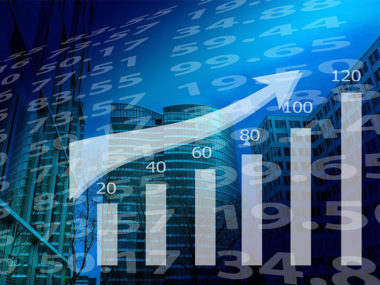An American Depository Receipt (ADR) is a unique kind of stock. It gets traded on U.S. markets, but it represents shares of stock in a foreign company.
Many American investors see it as a simple way to invest in international companies.
The ADR comes in the form of a negotiable certificate and gets issued by a U.S. depository bank. A single ADR certificate can represent many shares, a single share, or even a fraction of a share of the underlying company’s stock.
Once it is issued, it can trade like any other stock on U.S. exchanges. Some ADRs trade over the counter (OTC) outside of traditional stock exchanges.
Table of Contents
Why ADRs?
ADRs solve a particular problem. Small investors can find it challenging to invest in foreign stocks because they have to go through the hassles of setting up a brokerage account overseas.
Before ADRs, if you wanted to invest in a foreign company, you would first have to convert your dollars into the currency of the company’s home country. You would then open a brokerage account in that country and purchase the desired securities on the foreign exchange.
Problems with this process include exposure to currency price fluctuations, excessive fees, and trading on an unfamiliar exchange in a country that may have different regulations from the U.S.
ADRs solve these problems with a few simple steps. The foreign company delivers the stocks to an American depositor bank, and then the bank issues ADR certificates representing the stocks of the company. Since they are dealing with the bank, not the international company, investors can trade in U.S. dollars on U.S. exchanges or OTC markets.
The depository bank will also charge periodic custodial or “pass-through” fees as compensation for their custodial services. According to the SEC, these fees can range between $0.02 and $0.05 per share. The depository bank, not the foreign company, keeps these fees.
How Do ADRs Work?
You can purchase ADRs just as you would buy traditional stocks. You can get them on an exchange or buy them over the counter.
A bank may issue new certificates, which a dealer then sells. You could also purchase ADRs that other investors own.
In addition to over-the-counter markets, you can get ADRs on various stock exchanges (mostly the NYSE and the NASDAQ).
What are the steps for creating a new ADR?
To create a new ADR, an ADR dealer would have to buy the shares of the company in its home country and then deposit them in a depository bank in the U.S. The bank would then issue ADRs representing those shares.
The ADRs and dividends associated with them get priced in U.S. dollars. However, some ADRs are for dividend stocks. For these stocks, the foreign company will pay dividends in its native currency, but the dealer in the U.S. will have to distribute them in U.S. dollars after factoring in taxes, conversion costs, forex exchange rates, and ADR fees.
There are two types of ADRs: sponsored and unsponsored.
- Sponsored ADRs get endorsed by the foreign company whose stock they represent. The company signs an agreement with a depository bank to sell its stock on U.S. markets. The bank will then handle the distribution of shares and dividends, recordkeeping, and sales. Sponsored ADRs can be listed on the exchanges.
- Unsponsored ADRs are created and traded without the cooperation or permission of the associated company. These ADRs get sold in the over-the-counter markets in the U.S. because they do not meet SEC requirements for trading on an exchange.
There are three levels of ADRs: levels I, II, and III.
- Level I ADRs are the lowest level with the least reporting requirements with the SEC. Level I ADRs are only available over the counter. The only requirement for these ADRs is that the underlying stock gets traded on one or more exchanges in the company’s home country.
- Level II ADRs have higher standards than Level I ADRs. The company must file a registration statement with the SEC. Because of this registration and recordkeeping, Level II ADRs are for sale on major exchanges in the U.S.
- Level III ADRs have the highest requirements for following SEC procedures and regulations. The forms that the company submits must meet Generally Accepted Accounting Principles (GAAP) standards. Also, the company needs to make reports and materials sent to shareholders in their home country available through the SEC. Because of the information and regulatory requirements, these are generally the most respected and trusted ADRs available in the U.S.
Examples
The most famous example of an ADR is the one from the German car manufacturer Volkswagen AG. From 1988 to 2018, this ADR traded in U.S. markets as a sponsored ADR with the ticker VLKAY.
However, on August 13, 2018, Volkswagen AG terminated its ADR. J.P. Morgan issued an unsponsored ADR the very next day with the ticker symbol VWAGY. Investors had the opportunity to cash out of their VLKAY ADRs and purchase VWAGY ADRs, which many did. The current price for VWAGY is $15.23 per share.
Pros of Investing With ADRs
ADRs come with distinct advantages.
- They are easy to trade because you can buy them and sell them just like other stocks from U.S. companies.
- They are available via U.S. brokers, so you do not have to open an account in a foreign country.
- They get priced in dollars, so you do not have to calculate currency exchange rates.
- They diversify your portfolio by exposing you to overseas markets.
- Level II and level III ADRs need to meet SEC requirements.
Cons of Investing With ADRs
There are some potential drawbacks to ADRs that investors need to consider.
- Unsponsored ADRs traded OTC face the same risks and uncertainties as unregulated penny stocks.
- Investors potentially face double taxation in the U.S. and the ADR’s home country. The depository bank will pass tax burdens on to shareholders.
- The investor is limited to trading available ADRs, which may not include the companies they want to trade.
- Investors may incur both currency conversion and pass-through fees (of between $0.02 and $0.05 per share), which may potentially wipe out the dividends that they earn when combined with taxes.
- Currency fluctuations could lessen the value of an ADR because they could impact the underlying company’s performance.
Other Common Means of Investing in Foreign Stock
In addition to ADRs, there are other ways to invest in foreign markets.
Global Depositary Receipts (GDRs)
GDRs function like ADRs. However, they are available to global investors, not just those in the U.S. An investor can buy a GDR regardless of their location.
Foreign Direct Investing
To buy foreign stock directly, you need to open an account with a local broker in the target country or open a global account with a broker in your home country.
Foreign direct investing is only suitable for active investors with good information sources and a deep understanding of the costs, technical requirements, and tax implications of international trading.
Global Mutual Funds
International mutual funds operate just like any other mutual fund, except their portfolios include foreign stocks. There are a variety of global mutual funds that target investors with different goals and risk profiles.
International Exchange-Traded Funds (ETFs)
International ETFs allow investors to invest in foreign markets conveniently. Like ADRs, ETFs trade on U.S. exchanges. The products range from globally diversified ETFs to ETFs focused on particular countries or geographical regions. ETFs are easy to trade, so you can use them as both a long-term and short-term investment.
Multinational Corporations
If you’re not comfortable with other options, you can buy shares of local companies whose sales revenue comes from overseas. Examples of these companies include the McDonald’s Corporation or the Coca Cola Company.
Since these companies generate the majority of their revenue from global operations, buying their stock can give you a stake in global growth.
Investing in Currency
You can gain exposure to foreign markets by purchasing foreign currencies, such as the euro, or by purchasing futures contracts or exchange-traded funds that contain foreign currencies.
ADR vs. GDR
The main difference between an ADR and a GDR is that an ADR is only available in the U.S., but a GDR is available worldwide.
U.S. investors can invest in both instruments. However, ADRs are generally more accessible to U.S. investors.
Investing in GDRs can have the same risks as investing directly in foreign stock. These risks include currency conversion risk, tax implications, and having to understand different regulations.
However, a GDR could also lead to more profits if the investor understands the country’s investing environment and can gain access to a GDR that is not available via an ADR or fund in the U.S.
Image Source: https://depositphotos.com/





